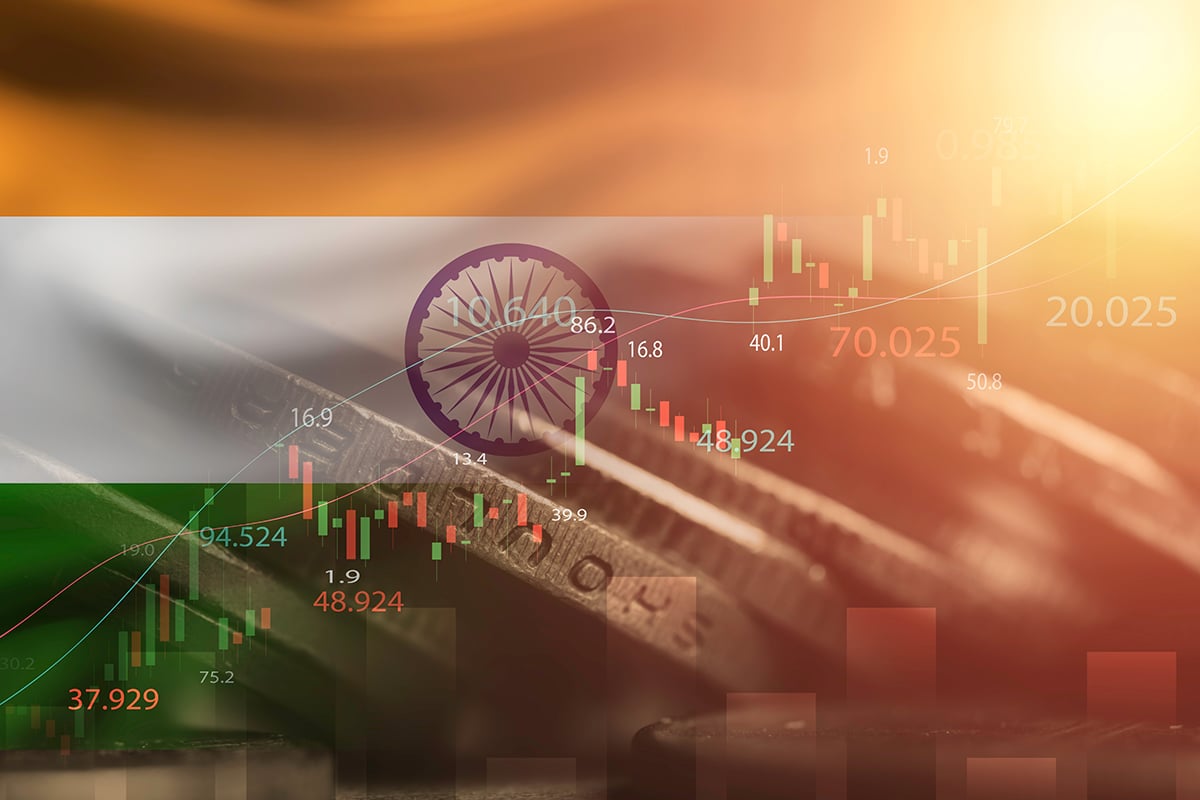India’s economic story has captured global attention, with Prime Minister Narendra Modi often portraying the nation as a burgeoning global power. During a recent economic forum, Modi emphasized India’s strengths—youthful demographics, impressive economic growth, and a thriving tech sector—describing the nation as being in a “sweet spot” with significant potential for global success. However, while the government’s outlook remains positive, recent data reveals potential challenges to this narrative.
Despite India’s continued status as one of the world’s fastest-growing economies, signs of deceleration are emerging. This raises important questions about whether the country can sustain its growth momentum over the long term.
Economic Data Reflects Slowing Growth
Several key indicators suggest that India’s economic expansion may be slowing. The GDP growth rate slipped to 6.7% between April and June, down from 7.8% in the previous quarter. This slowdown marks the most sluggish growth seen in over a year, indicating that the post-pandemic rebound might be running out of steam. Although a 6.7% growth rate still points to robust economic activity, the downtrend has become a point of concern for policymakers aiming to maintain a higher growth pace.
Other indicators reinforce the perception of a slowdown. The performance of eight core industries, including coal, oil, and electricity, declined in August for the first time in three years. Additionally, car sales—a key indicator of consumer confidence—dropped by 19% year-on-year in September. This decline in consumer spending, coupled with a dip in GST collections to a three-year low, points to broader economic cooling.
Global Pressures and Oil Prices Add to the Challenge
India’s economic outlook faces additional hurdles due to global developments, especially with the possibility of rising oil prices. Tensions in the Middle East have sparked concerns about potential oil price spikes, which could pose significant risks to India’s growth. As the country relies on imports for over 85% of its oil, fluctuations in the global oil market can significantly impact its economy. Experts estimate that a $10 increase in oil prices could reduce India’s GDP growth by up to 0.4%, highlighting the nation’s exposure to global energy market shifts.
Higher oil prices would likely force the government to increase subsidies, putting pressure on the national budget. Such increased spending could limit the government’s ability to invest in crucial areas like infrastructure and social services, potentially dampening long-term economic prospects even further.
Government Optimism Amid Economic Uncertainty
Despite these concerns, the Indian government remains confident about the economy’s resilience. The finance ministry has acknowledged recent challenges but insists that these are temporary and not indicative of a deeper economic shift. During its meeting on October 9th, the Reserve Bank of India decided to keep interest rates steady, maintaining its growth forecast for the fiscal year at 7.2%. This decision reflects a belief that India’s economy can withstand the current downturn.
This optimism fits within the broader narrative that India remains the fastest-growing large economy. Yet, some experts argue that the government’s positive outlook might overlook critical structural challenges that could hinder sustained growth. Issues like low private investment, stagnant manufacturing, and falling real wages could become significant obstacles if not addressed.
Challenges in Manufacturing and Labor Markets
A significant concern for India’s economic policymakers is the state of the manufacturing sector, which has been losing momentum. Growth in manufacturing output has slowed, with recent data indicating its weakest performance in eight months. This is particularly troubling for Prime Minister Modi, who has made manufacturing central to his economic strategy, aiming to position India as a global production hub.
Labor challenges also weigh on the manufacturing sector’s performance. A prolonged strike at a Samsung facility in Tamil Nadu, for instance, has disrupted production, casting a shadow over India’s ambitions in electronics manufacturing. Beyond such incidents, India’s labor market faces broader structural issues, such as a significant portion of the workforce still being engaged in agriculture. In 2023-24, the percentage of agricultural workers increased to 46%, up from 43% in 2018-19, while manufacturing employment declined. This trend suggests that India has struggled to create enough industrial jobs to absorb its expanding labor force.
Looking Ahead: Navigating Opportunities and Risks
To tackle these challenges, the Indian government has introduced new initiatives aimed at improving employment, such as expanding apprenticeship programs. However, critics argue that a more focused approach is needed, including better-targeted subsidies for labor-intensive industries. Shifting attention from capital-heavy projects to those that create more jobs could help ease the pressure on India’s labor market.
Additionally, simplifying regulations for businesses could boost productivity. Studies show that many Indian companies operate multiple smaller factories to comply with regulations, resulting in lower productivity levels. By addressing these regulatory challenges, the government could enable firms to expand more efficiently, thereby supporting the broader goals of India’s economic growth.
As India faces these complex challenges, it must strike a balance between optimism and a realistic assessment of the situation. While the country continues to lead global growth, recent data suggests that a careful, strategic approach will be key to maintaining its economic momentum in the years to come.







